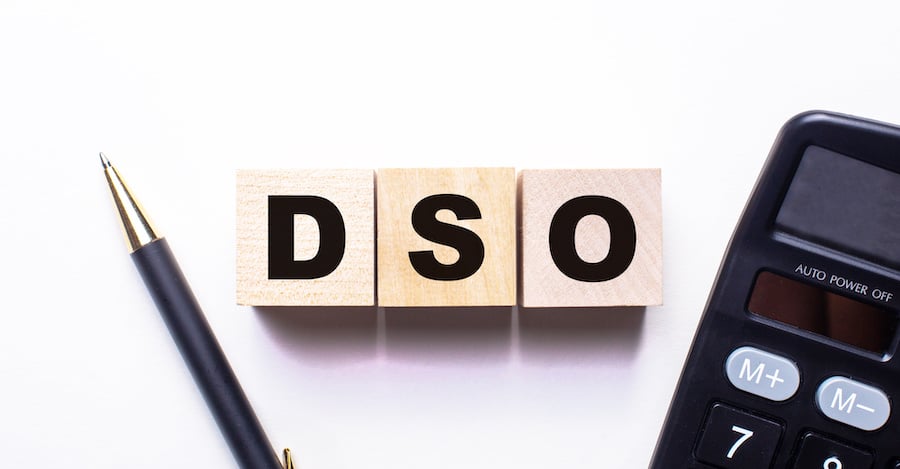
Instead of focusing on selling products, a service business’s focus is on its workforce. In the service industry, employees and labor are considered the “product” of a company. In addition to job costing and looking at profit margins, there is another critical KPI that service organizations need to watch. The day sales outstanding (also known as DSO) is a calculation used to estimate the average length of a company’s collection period.
You Can't Manage What You Can't Measure
What management monitors gets done. You can’t manage what you don’t measure. To measure your cash flow, you need to keep track of Days Sales Outstanding (DSO).
Usually, DSO is calculated on a monthly basis. The monthly reports provide general information about the average number of days customers take to pay their invoices. Because a single month is usually not enough information, DSO needs to be calculated on a month-to-month (or period-to-period) basis to see if the trend is moving higher or lower.
You want to reduce your DSO to the smallest number possible. Why? Because for every additional day in your DSO metric, you’re doing work that you haven’t been paid for. Unless you’re in the business of lending people money – you should reduce your DSO.
DSO measures the number of days it takes to collect a dollar of sales. It’s the average age of your accounts receivable — if your average is trending higher, then your business is more likely to struggle with cash flow. Knowing your DSO can also help determine whether or not you need to improve your current processes and policies or outsource collections.
Timely Billing
The easiest way to reduce DSO is with timely billing through lightning-fast invoicing, and fast payment incentives like keeping a credit card on file or shortening net terms for payments.
For example, let's say your average time for billing is 17 days and your DSO average is 36 days. By automating your invoicing process through Intuit Merchant Services or other methods, you may be able to reduce this to three days, shaving two full weeks off of your DSO.
While billing your clients more quickly does not guarantee faster payment, many firms have a consistent payment process. Timely billing generally means timely payments.
Every day that you're doing work that your client hasn't paid for upfront, you're essentially giving that client a loan.
Calculating Days Sales Outstanding (DSO)
The DSO can be calculated by dividing accounts receivable for a specific period by the annual revenue per day.
Daily Sales Outstanding = Ending Accounts Receivable / (Revenue/Day)
For example, if a company’s ending AR was $1,500 and annual revenue was $9,000, you would divide 1,500 by 9,000/360 (for 360 days in a year). So 1,500 / (9,000/360) = 60.
This shows that it takes the customers on average a period of 60 days to pay their bills.
Why Days Sales Outstanding (DSO) Matters
One of the best ways to improve a company’s cash flow is to speed up the amount of time it takes for customers to pay their bills. In product-centric businesses, customers normally pay for the entire cost of the product at the time of purchase. However, in service-based organizations, credit terms allow customers to pay 30, 60, or even 90 days after services have been rendered.
If a company’s cash flow could use some improvement and the DSO is significantly high, it’s time to investigate why customers are taking their time making payments. Is it that your sales staff is too relaxed when setting up sales terms? Does your billing and receiving process need to be optimized? Perhaps the software you are using to bill and record payments is having an issue or needs to be updated or upgraded. How long does it take for an invoice to reach a customer?
Taking all of these variables into consideration can help you reduce your DSO. Streamlining or outsourcing your billing process could be one way to lower the DSO ratio. Another could be to provide incentives to your customers for paying early such as a discount for payments up front, or an extra month of service for every six consecutive months of payment on time.
Keep in mind that the DSO ratio provides a general overview of business performance. A high DSO ratio can signify that a company has a poor collections policy. Or it can also mean that their target customer is having problems with credit in general.
While lowering DSO is typically the goal, too low of a DSO ratio could indicate that the company’s credit policy is too strict. This can potentially scare away new clients. Calculating the DSO and comparing daily sales outstanding with other KPIs will help to develop a better overall picture of a company’s business performance.
Reduce Your Days Sales Outstanding (DSO) to Improve Cash Flow
The days sales outstanding is a critical measure for determining how much cash you can expect to have on hand. Longer DSOs mean that you spend money on activities or products and don't get paid for a longer period. Improve Cash Flow Management and learn how to improve DSO. Reducing DSO is a very important method for improving your cash flow.

.png?width=563&height=144&name=New%20GF%20Logo%20(37).png)

